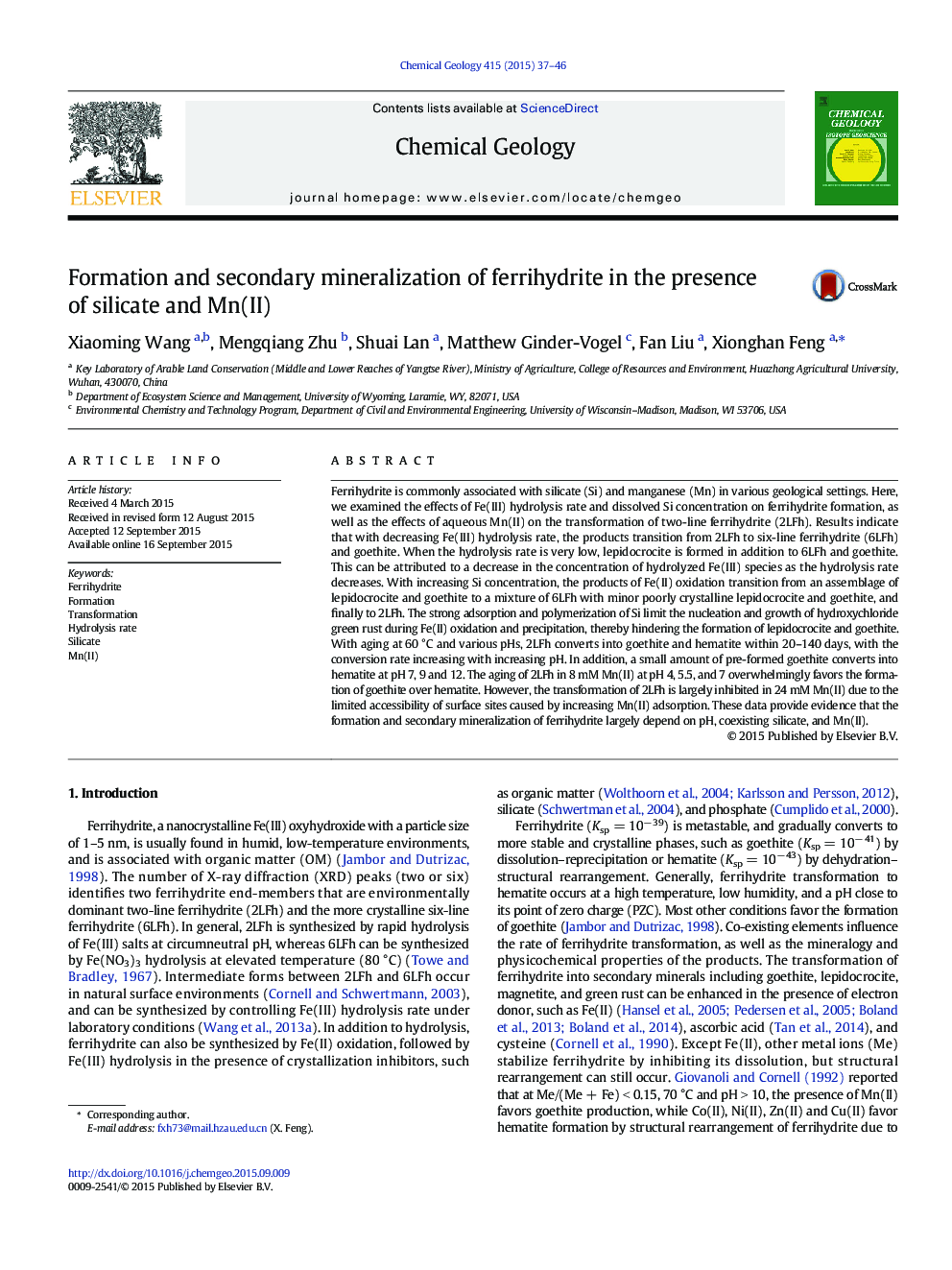| کد مقاله | کد نشریه | سال انتشار | مقاله انگلیسی | نسخه تمام متن |
|---|---|---|---|---|
| 6436222 | 1637559 | 2015 | 10 صفحه PDF | دانلود رایگان |

- Formation and transformation of ferrihydrite depend on Fe(III) hydrolysis rate, and silicate and Mn(II) concentration.
- Products change from ferrihydrite to goethite to lepidocrocite with decreasing hydrolysis rate.
- Products vary from lepidocrocite and goethite to ferrihydrite with increasing silicate concentration.
- Mn(II) induces the formation of goethite while inhibits the hematite precipitation at a lower pH.
- Pre-formed goethite converts into hematite at a higher pH.
Ferrihydrite is commonly associated with silicate (Si) and manganese (Mn) in various geological settings. Here, we examined the effects of Fe(III) hydrolysis rate and dissolved Si concentration on ferrihydrite formation, as well as the effects of aqueous Mn(II) on the transformation of two-line ferrihydrite (2LFh). Results indicate that with decreasing Fe(III) hydrolysis rate, the products transition from 2LFh to six-line ferrihydrite (6LFh) and goethite. When the hydrolysis rate is very low, lepidocrocite is formed in addition to 6LFh and goethite. This can be attributed to a decrease in the concentration of hydrolyzed Fe(III) species as the hydrolysis rate decreases. With increasing Si concentration, the products of Fe(II) oxidation transition from an assemblage of lepidocrocite and goethite to a mixture of 6LFh with minor poorly crystalline lepidocrocite and goethite, and finally to 2LFh. The strong adsorption and polymerization of Si limit the nucleation and growth of hydroxychloride green rust during Fe(II) oxidation and precipitation, thereby hindering the formation of lepidocrocite and goethite. With aging at 60 °C and various pHs, 2LFh converts into goethite and hematite within 20-140 days, with the conversion rate increasing with increasing pH. In addition, a small amount of pre-formed goethite converts into hematite at pH 7, 9 and 12. The aging of 2LFh in 8 mM Mn(II) at pH 4, 5.5, and 7 overwhelmingly favors the formation of goethite over hematite. However, the transformation of 2LFh is largely inhibited in 24 mM Mn(II) due to the limited accessibility of surface sites caused by increasing Mn(II) adsorption. These data provide evidence that the formation and secondary mineralization of ferrihydrite largely depend on pH, coexisting silicate, and Mn(II).
Journal: Chemical Geology - Volume 415, 15 November 2015, Pages 37-46